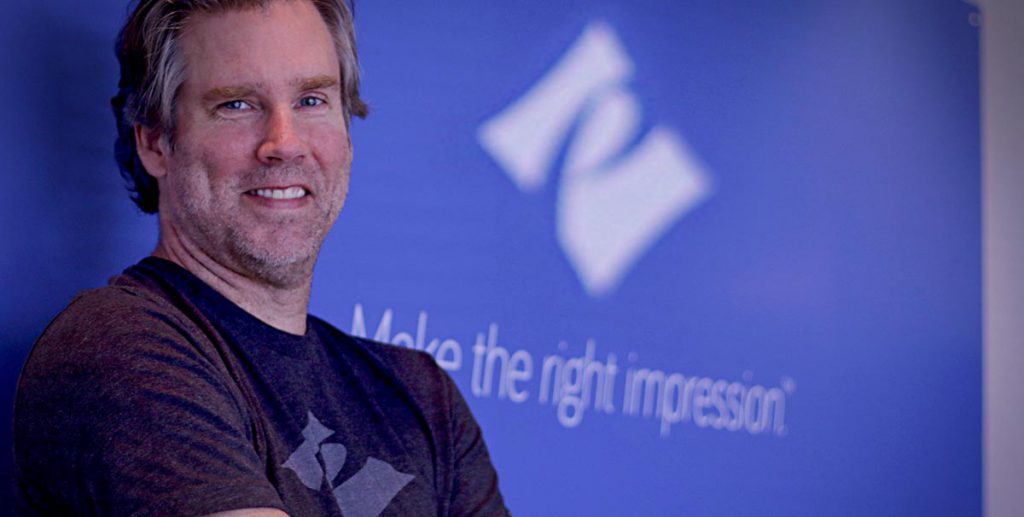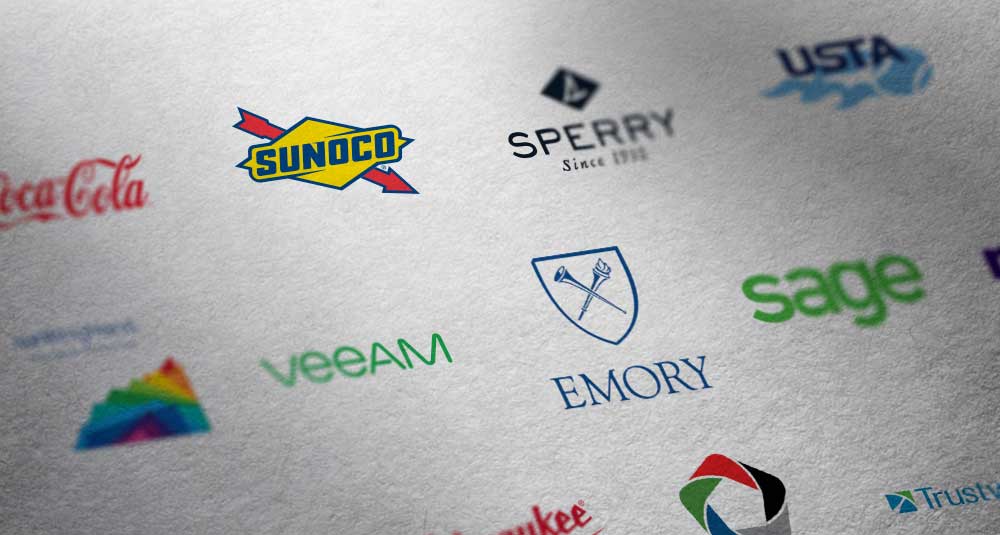by Jack Nicholls, Creative Director
I have been designing logos since I was about 5 years old. As a good Canadian boy, I would try to copy the NHL hockey logos, and later the NFL logos to the point where, through sheer repetition, I could draw them all by heart. The big red “C” of my hometown Montreal Canadiens, the spoked “B” of the evil Boston Bruins, and that big awesome Nordic horn on the purple Minnesota Vikings helmet. Even then, I had a feeling that some were better designs than others...but why? What makes a "successful" logo? How do you define its success?
I remember enjoying learning if a logo had a symbolic meaning to the city they belonged to. When I drew the Detroit Red Wings logo, I liked it even more when my dad told me that the car tire in the logo represented the city’s automotive industry.
A company’s logo shouldn’t be that different from a sports one. It should instill confidence, be very recognizable, and elicit pride and loyalty — for employees and clients alike. It should also look cool on a t-shirt. I think there are a few simple criteria, that if met, will result in a logo that can be defined as "successful." Of course this is all just my opinion — but I have formed this opinion over (gasp) about 40 years of observation.

Where to start
Below are some common approaches (and examples) for designing a logo.
a. The name
There are levels of “obviousness” when it comes to brand recognition. The simplest, most obvious is if the logo is just the name in a stylized font or design. This can be a very clean and effective method. It doesn’t rely on a symbol, the wordmark is the symbol. Take the logos of IBM or Coca-Cola, for example. It’s just their names, but in completely original, instantly recognizable letter forms. Think Metallica, KISS, and the Beatles.

b. The symbol
One step over from that is the name with a symbol. The Apple logo is an apple, Burger King shows a burger, Domino's, Target, Puma... A symbol of the name of the company should be considered quite obvious. Your company name is “Cardinal Software” and your symbol is...a cardinal. You get it. Other people will, too. Trying to be original about the design is where your skill and imagination come in. Good luck, Batman.

c. The first letter(s)
This is still pretty obvious. “What’s his name, again?.. It starts with a “P””. It helps tie down the association of your company’s name to its most obvious symbol: the company name’s first letter. It ain’t genius – but it can be effective. Your company starts with a letter “P” so your logo is a letter “P”. That’s what I did for Pinnacle Promotions and NetKnacks tennis awards. Superman is a strong subscriber to this approach.

d. The unrelated symbol
A great coup is to get your brand known for a symbol that has nothing to do with the name and doesn’t involve the word or letters. It is purely an associated mark. The NBC peacock and Pepsi (swirly ball thing) are pretty good examples, but I think Nike and the Rolling Stones own this one. Swoosh.

Achieve logo greatness
Now that several approaches have been covered to get started, here are 5 checkbox-able elements that I believe can help steer you toward achieving logo greatness.
1. Keep it simple
KISS - “Keep it simple, stupid” is a cliché for a reason. And I think it was coined by a logo designer. The genius of many logos lies in their simplicity. If you ask any random person to draw the McDonald’s logo, there's a good chance they can sketch the golden arches. This is called brand recognition. Also, no matter how complex the logo, it should still work when represented in black and white. Try to avoid drop shadows, effects and anything that makes your logo what I call “fussy”. Just take a look at the big kids, like Amazon, Walmart, Mercedes, etc. They spend millions on branding and advertising, but all of their logos are very simple.
A very quick aside: rules are meant to be broken. I’ve seen many breweries, for example, with logos featuring detailed, retro, hand-drawn details, like Creature Comforts from Athens, GA, for example. They look great on a t-shirt or a beer tap, and I admire their complexity (look for a future blog post on this, specifically), but it’s still a good idea to have a simplified version because...
2. Make it scalable
This ties in to “simple”, but deserves its own category because of its importance. Keeping a logo simple is a design decision — making it scalable is an exercise in practicality. Having worked in the promotional products industry for many years has allowed me the opportunity to see thousands of logos, and many of these logos, although great, will absolutely not work when imprinted on a pen. The logo designer did not have the foresight to realize their logo might be used at ⅛ of an inch. Thin lines, tiny fonts, and fussy details are all to be avoided for this reason.
3. Easy on the color
Like “scalable”, “color” could also roll up under the “simple” category. Most designers know that color usually comes after design – I said it before, but no matter how complex the logo, it should still work in black and white.
A whole essay could be written about color and what it can mean for your logo and brand. And many have. Red is aggressive, blue is peaceful, yellow is friendly, blah blah blah. I won’t get into those details because some of the color “feeling facts” go against what I think is just as important: originality. I've designed a logo that features the owner’s college football team colors (Go Tigers!) I once chose orange simply because several competitors were blue. Ask the stakeholder and go with your gut.
Whatever your feelings about specific colors, simplicity of color is often the best way to go. Secondary colors, whether they are in the logo itself, or part of the supporting branding elements, can be tweaked over time. Also, there are times when your logo will need to be used as a single color, like white on a colored shirt. Fewer colors can mean less cost. That aforementioned NBC peacock is great, but I’m sure many people have slapped their foreheads when it comes to using it (and paying for it) as a 7 color screenprint on a polo shirt. There will also be times when using several colors isn’t even an option, like a one-color pad print on the side of a pen. Trust me on this one. One, or two colors, max.
4. Be original
When designing anything – logos especially – it's good practice to stay up with trends, so that you can avoid them. If you have studied logos over the years, you can often see where they fit on a timeline. Heavy drop shadows, skeuomorphic design (designer-geek word of the day! It refers to a design style that attempts to be as "realistic" as possible: three-dimensional shading, shadows, etc.), swirling elliptical shapes, the overlapping of multiplied colors, and single line icons all tend to date logos. It might look super cool this year, but will it be as good in five?.. ten? Beware of jumping on a bandwagon.
A side effect of trying hard to be original is that sometimes you are not as original as you thought! I have poured many hours into designing a logo just to have Dean in Accounting say “that looks just like the [another company] logo!” Being a successful designer means you have to develop thick skin. Of course you want to shoot back and say “no, it doesn’t” or “at least I’m not an accountant, Dean-o.” But you can’t. And you shouldn’t. This kind of feedback, although painful (and sometimes downright wrong) is valuable. Take the critique seriously. Ask other people what they think. Even point out the comparison – whether you like it or not, it might be true. Like with music, there’s always another melody. And almost every time, I’ve been happier with the result after going back to the drawing board. Because part of me knew Dean was right.
5. Be clever
This is the fun part. This is where, if you can check off the previous elements, you can flex your logo-designing muscles. This separates the designers from the truly gifted designers. It is not necessary to have an element of clever, but it is very rewarding to get the extra points. Everyone seems to know about the FedEx arrow in the negative (white) space between the “E” and the “x”. Once seen, it cannot be unseen. Sure, it’s a bit of a happy accident, but it was tweaked to be absolutely, positively, intentional. This negative space in a logo can often be where clever lives. Every logo designer looks for it, and hopes to find it there.
I have designed many logos, and I have to admit, I almost always try to get these extra clever points. The thing to be careful of, though, is that it shouldn’t come at the expense of the design itself. Sure, you have a super clever idea of how to sneak some element of the company into one of the letters of the logo. But if you can’t make it look good, it’s not worth it. If it’s too small, it’s not worth it. It has to come in last place, because it is, ultimately, unnecessary.

Your turn
I’ve often thought that logo design is perhaps the purest of all the corporate arts. Maybe it goes back to the hieroglyphs. You are trying to cram the essence of an entire company into one little nugget. And making it simple, scalable, original, memorable, and maybe even a little clever, is a challenge that many designers attempt, but very few truly excel in.
There's a very helpful Picasso-influenced phrase I often use as a retort to clients or friends who might say “that’s what you came up with for a logo? It’s so simple. It must have taken you, like, 5 minutes to do that.”
“Actually, it took me 40 years to do that.”
As a designer, it is quite something to be able to look at a company's logo and say "I did that." It will (hopefully) be used for years on letterhead, the website, branded apparel, business cards, promotional products, videos – and maybe even on the front door you walk through every day.

Related nuggets of usefulness:
- The Psychology of Colors in Product Branding and Swag Design
- Take A Tip From the Automobile Industry and Logo Your Promo
- Kim’s Product Pick of the Week: The Cyklone Bottle Coolie
- Promotional Youth Outerwear and Personal Branding, “Future Funk” Style
- Mercedes-Benz Does More Than Just Lend a Hand with Promotional Automotive Items
- “That’s a Tier 2 problem.” Ummmm…what?


Nicely done, this blog idea is perfect for our product & designing a Logo.
Hi Jack! Thanks for the tips – I really like your post about logos. You have much wisdom on the topic, and it will help as I continue to consider and reconsider my branding. -Karin